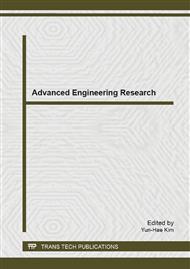p.183
p.189
p.193
p.198
p.205
p.209
p.214
p.218
p.223
A New Method to Quickly Optimize the Thickness of Multi-Holes Plate
Abstract:
The theory of plates and shells is not adapted to design thickness for the multi-holes plates in engineering. A new method to quickly optimize the thickness based on the finite element method theory was put forward. The method combined the theory of plate with the finite element method to establish a mathematical model and analyzed the influences of load, constraint and complexity on design error. The practices demonstrated that the proposed design method is effective and feasible.
Info:
Periodical:
Pages:
205-208
Citation:
Online since:
April 2014
Authors:
Keywords:
Price:
Сopyright:
© 2014 Trans Tech Publications Ltd. All Rights Reserved
Share:
Citation:


